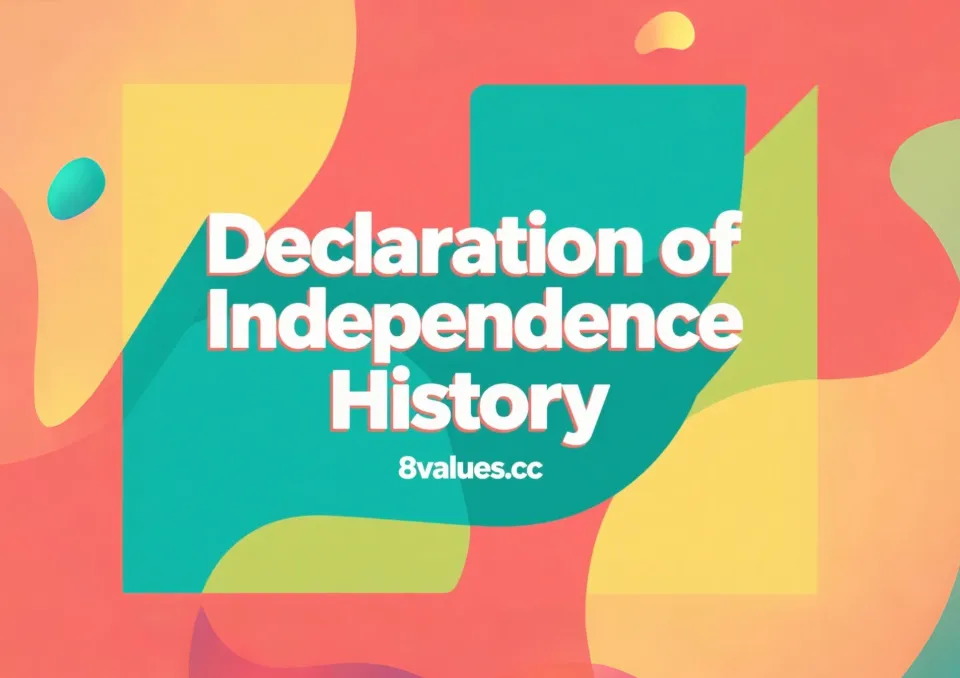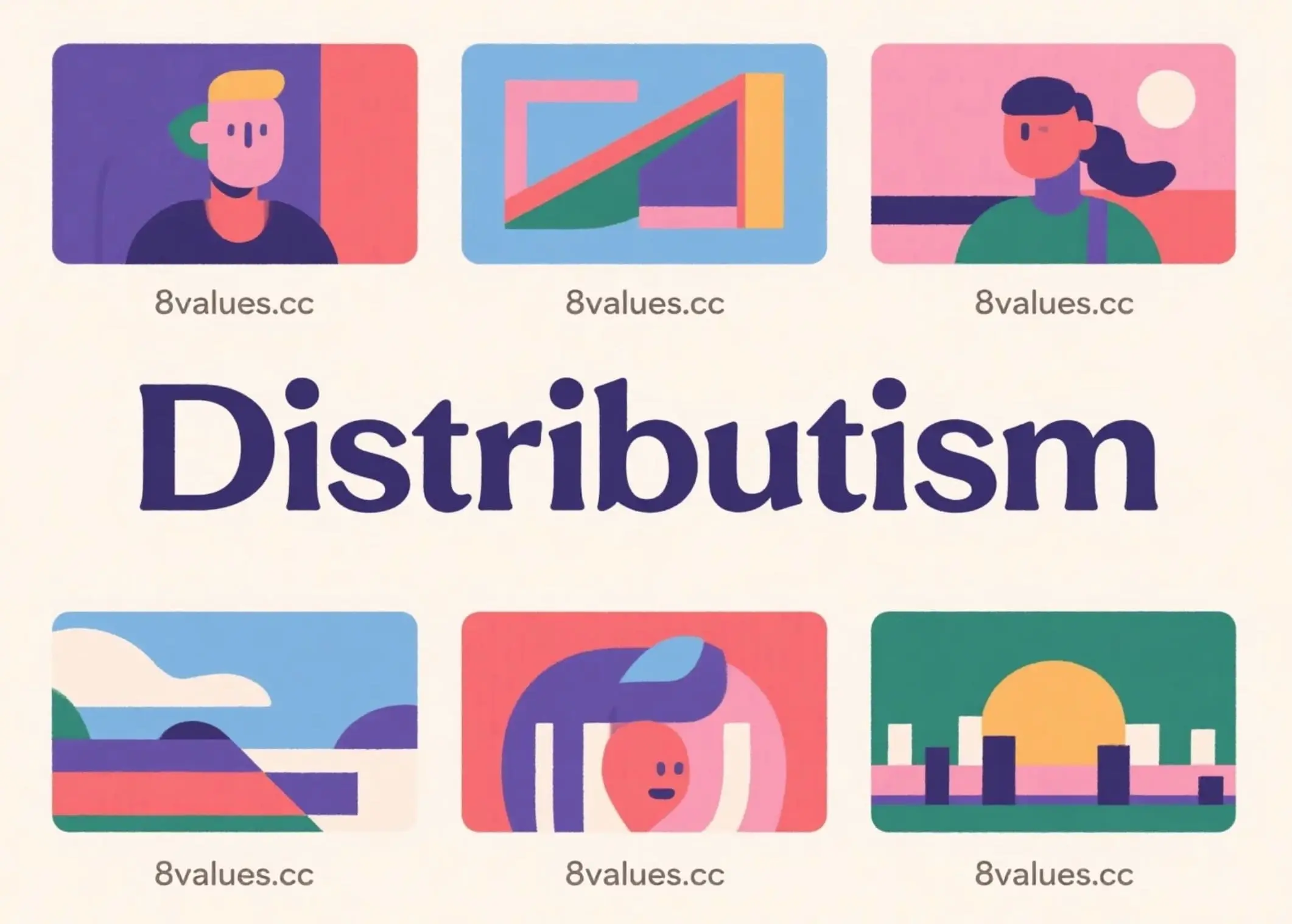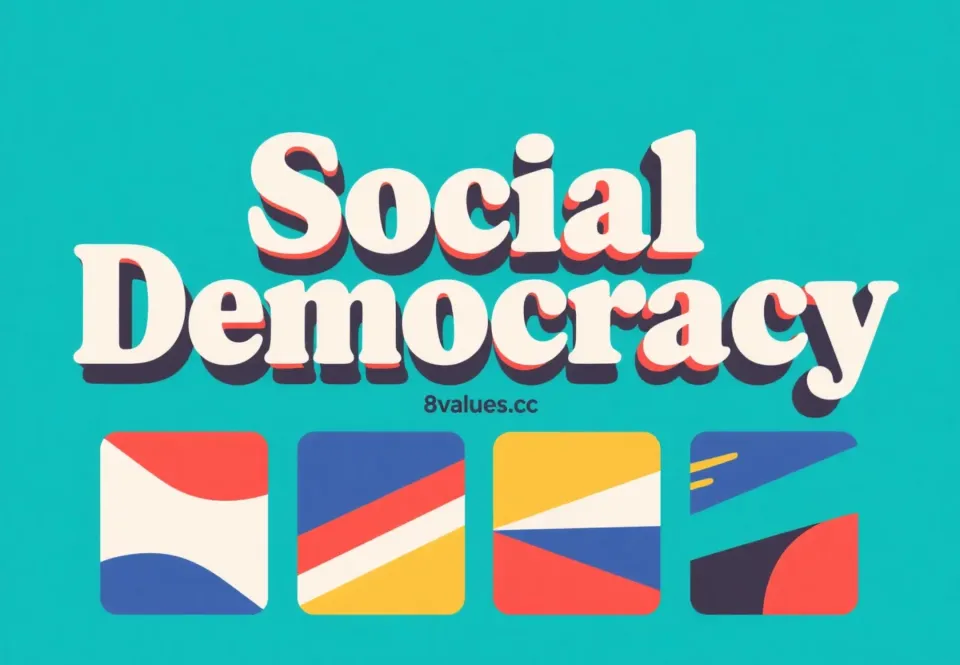Declaration of Independence: An authoritative guide to history, core ideas, signatories and global influence
The Declaration of Independence is one of the most important institutional instruments of the United States of America. It not only declared that the thirteen North American colonies had left British rule, but also laid the foundation for modern democracy and freedom with its core philosophy of "everyone is born equal". This article will provide you with an in-depth understanding of this programmatic document with global influence.
The unanimous Declaration of the thirteen British colonies in North America declared independence from the Kingdom of Great Britain and made clear their justifications. On July 4, 1776, the Second Continental Congress formally adopted the text of the declaration in Philadelphia. This document is a key step in the establishment of the United States and one of the most important establishment documents in the United States.
The birth and historical background of the Declaration of Independence
Between the 1760s and 1770s, relations between Britain and its North American colonies became increasingly tense. The colonists believed that as British subjects, they should enjoy "all natural, basic, inherent and indivisible rights"; but the British Parliament continued to impose taxes on colonies without colonial representatives in the Parliament, such as the Stamp Act of 1765 and the Townshend Acts. The colonial elites passed the Virginia Resolves, claiming that the colonists have the right to the same "freedoms, privileges, concessions and immunities" as the people of Great Britain.
The colonial people's disillusionment with the king was shattered as the British government adopted increasingly tough policies, such as the enactment of the Intolerable Acts and the public declaration of the colony's rebellion. The transformation of political thought is largely attributed to the short book "Common Sense" published by Thomas Paine in 1776. The book strongly demonstrates the necessity and rationality of North American colonial independence in easy-to-understand language. Paine's theory resonated with the lower classes of society, shifting the goal of war from fighting for domestic rights in the British Empire to fighting for complete independence.
On 10 May 1776, the Continental Congress adopted a resolution calling for colonies that had not yet established a revolutionary government to begin the establishment, which was considered in many ways the first declaration of independence by Congress. A few weeks later, on June 7, 1776, Virginia representative Richard Henry Lee presented the famous Lee Resolution at the Continental Conference, with the core provisions: "This resolution: these joint colonies are, and should be, free and independent states; they lift all obligations of all loyalty to the British royal family and should completely terminate all political ties with Great Britain."
After fierce debate, the Mainland Conference finally passed the Lee Resolution on July 2, 1776 . The result of this vote is a formal declaration of legal independence, which John Adams once predicted that future generations will always regard July 2 as the "Independence Day" in the United States.
Drafting and signing of the Declaration of Independence
After Lee's resolution was introduced, Congress appointed a Committee of Five to draft a public declaration in case the reason for the separation was explained to the world when it was passed.
Declaration drafter and revision
The committee consists of the following five representatives:
- Thomas Jefferson (Virginia)
- John Adams (Massachusetts)
- Benjamin Franklin (Pennsylvania)
- Robert R. Livingston (New York)
- Roger Sherman (Connecticut)
Although John Adams was an active advocate of the independence movement, he firmly demanded that it be written and drafted by Thomas Jefferson . Adams considered Jefferson to be "more eloquent, more popular" than him and better writing.
Jefferson almost completed the first draft of the declaration on the second floor of 700 Market Street, Philadelphia, where he rented. Franklin and Adams subsequently revised the document. The draft was submitted to the Mainland Conference on 28 June 1776.
Congress as a whole systematically edited Jefferson's draft, removing about a quarter of it to refine the wording and improve the sentence structure. Most notably, Congress deleted a passage that severely condemned King George III of England for forcibly promoting the transatlantic slave trade in the colonies. Representatives of southern states (such as South Carolina and Georgia) and northern states who profited from the slave trade oppose the wording, so the passage was removed in order to reach a consensus of "unanimous".
Pass the date and signing process
The text of the Declaration of Independence was officially adopted by the Mainland Conference on July 4, 1776 . This day, rather than July 2, where legal independence is legally independent, is designated as the Independence Day in the United States.
Upon adoption, Continental Congress President John Hancock immediately signed the document. His signature is famous for its huge size, and legend says that King George III "can see the name without wearing glasses."
However, the signing of the formal parchment copy (engrossed copy) was conducted on 2 August 1776 . A total of 56 representatives in history signed the declaration. The representatives at that time were very clear that signing the document was a treason against the British royal family and would face the risk of being sentenced to death, so the atmosphere was solemn and dignified when signing it. Among the signatories are two future U.S. presidents: Thomas Jefferson and John Adams.
The core philosophy of the Declaration of Independence: Rights, Equality and Political Legality
The Declaration of Independence is not just a political statement, it is also a political philosophy document with far-reaching influence. The declaration is usually divided into five parts: Introduction, Preamble, Indictment against King George III, Denunciation against the British people, and Conclusion.
Universal truths in the preface
The most famous and far-reaching text of the Manifesto is contained in its preface , which outlines a universal political philosophy, the basis of legitimacy of government:
"We believe that the following truths are self-evident: all men are born equal , and the Creator gives them several inalienable rights , including the right to life, freedom and the pursuit of happiness . To protect these rights, people establish governments among them, and the legitimate power of government comes from the consent of the ruled . Any form of government, as long as it undermines the above purpose, has the right to change or abolish it and establish a new government..."
These core ideas originated from the political thoughts of the Enlightenment era, especially the works of John Locke. Locke's liberal philosophy is regarded by many Americans as the foundation of political beliefs.
- All are born equal : This solemn declaration became a moral code in American history and inspired all subsequent social justice movements, although many of the signatories were slave owners themselves.
- Unalienable Rights : These rights include life, freedom and the right to pursue happiness . This concept clarifies the purpose of the government's existence, namely, to safeguard these fundamental rights.
- Consent of the governed : The power of the government must be derived from the consent of the people. This principle is the core embodiment of sovereignty in the people's thought .
When the government "consistently abuses its power and robs", the people have the right and obligation to overthrow the government and establish new guarantees for their future security.
Accusation and condemnation of the British people
Most of the declaration (about two-thirds or three-quarters) is used to enumerate 27 specific accusations against King George III of England . These accusations alleged that the King of England was intended to put the colonial people under absolute autocracy . The content of the complaint includes refusal to approve laws that benefit the public interest, establishing excessively redundant government positions, expanding the power of garrison, and levying taxes without the consent of the colonies.
The declaration then condemned the British people . The colonial representatives pointed out that they had repeatedly earnestly called on the British "brothers" to their sense of justice, hoping that they could stop "unreasonable plunder" and maintain the same blood relationship. However, the British people "turned a deaf ear" about this, which made the colonies "extremely forced to announce their separation from them" and declared: "It is an enemy in wartime and a friend in peacetime."
Political Thoughts and Ideology
The core concepts in the Declaration of Independence, such as "everyone is born equal" and "the consent of the ruled" constitute the philosophical basis of American democratic politics. These fundamental concepts are still a guiding beacon for individuals seeking to understand political stances and fundamental principles. If you are interested in your political values tendencies and want to understand how these principles are associated with modern political ideology, you can try a free 8values political values tendency test . In addition, this website provides other political tests and a detailed introduction to all 8values results ideology to help you deepen your understanding of your political stance.
The global and domestic impact of the US Declaration of Independence
The Declaration of Independence not only successfully led to the birth of the United States of America, its rhetorical power and universal appeal made it one of the most influential political documents in human history.
International sovereignty and diplomatic breakthroughs
From the perspective of international law, the primary function of the Declaration of Independence is to demonstrate the sovereignty of the United States to the outside world . The Law of Nations, a dominant international law book in Europe at that time, believed that independence was a fundamental feature of a sovereign state. By declaring itself an independent country, the U.S. colonies were able to seek international recognition and military assistance. After the declaration was issued, the Moroccan Sultan mentioned American ships in a consular document in 1777, but it was not until the Treaty of Alliance with France signed with France in 1778 that the United States received formal recognition of independence and received French assistance in the war against Britain.
The Declaration of Independence also created a new political genre , the formal Declaration of Independence, which had a profound impact on the subsequent global independence movement. During the French Revolution, many French leaders admired the ideals of the Declaration of Independence, and the content and inspiration of the Declaration of the Rights of Man and of the Citizen (1789) were mainly derived from the ideas of the American Revolution. In addition, the Declaration of Independence of Venezuela (1811), Liberia (1847), Hungary (1849), Czechoslovakia (1918), and Vietnam (1945), etc., all borrow or directly quote the text of the United States.
Lay the standard of domestic political ethics in the United States
In the first few years after the American Revolution, the text of the Declaration of Independence itself did not receive much attention, and people paid more attention to the act of declaring independence . During the 1787 Constitutional Convention, the language and concepts of the declaration were not even incorporated into the United States Constitution.
However, by the 19th century, as political debates intensified, the universal language of equality and inalienable rights in the manifesto began to become the moral and political cornerstone of various social change movements.
- Abolitionist Movement and Lincoln's Interpretation : At the beginning of the Manifesto, its slogan "Everyone is born equal" contrasted with the widespread slavery in the United States, triggering sharp criticism from British royalists and abolitionists (such as Thomas Day). Entering the 19th century, abolitionists regarded the Declaration of Independence as a moral weapon against slavery. Abraham Lincoln believed that the Declaration of Independence represented the highest principle of the American Revolution. He insisted in the debate in 1858 that the language of the declaration was intentionally universal , aiming to establish a "standard maxim" that will allow future generations to continuously strive to achieve "life, freedom and the right to pursue happiness." Lincoln's interpretation established the Declaration of Independence as a moral guide for interpreting the Constitution.
- Women's Rights Movement : At the Human Rights Conference in Seneca Falls, New York in 1848, women's rights advocates (such as Elizabeth Cady Stanton) imitated the Declaration of Independence to draft the Declaration of Women's Rights, proclaiming that "all men and women are born equal" and demanding equal social and political equality.
- Civil Rights Movement and LGBTQ+ Rights : In the civil rights movement of the 1960s, Dr. Martin Luther King Jr. quoted the “Everyone is born equal” in the Declaration of Independence in his famous speech “I Have a Dream”, calling on the state to fulfill its commitment to the foundation of its founding. In 1978, activist Harvey Milk also quoted a declaration that emphasized that the inalienable rights apply to people of all sexual orientations.
Document formats and historical archives of the US Declaration of Independence
The formal copy of the Declaration of Independence, also known as the "parchment version", is currently permanently treasured in the National Archives' Rotunda for the Charters of Freedom in Washington, DC.
Main printed version
There are several important historical versions of the declaration:
- Dunlap broadside : After the passage of the July 4, 1776 text, John Dunlap printed about 200 single pages overnight, and then distributed them to the states and the mainland army. George Washington read it to the troops stationed in New York on July 9.
- Formal transcript : This is a carefully copied version on parchment by the clerk Timothy Matlack, and is the version that was finally signed by 56 representatives (mostly on August 2).
- Goddard broadside : On January 18, 1777, the Continental Congress commissioned Mary Katherine Goddard to print the first version with all the names of signers, formally disclosed the identities of these "traitors" to the public for the first time.
- Stone Facsimile : Because the original copy was blurred due to improper preservation in the 19th century, in 1823, then Secretary of State John Quincy Adams commissioned William J. Stone to produce a high-precision copper engraving copy. This replica is very clear and has become the main basis for modern reprinting and research.
The political ideals and philosophical foundations embodied in this declaration are still guiding people's pursuit of equality, freedom and justice . It is not only the founding program of the United States, but also a milestone in the history of world political civilization.






